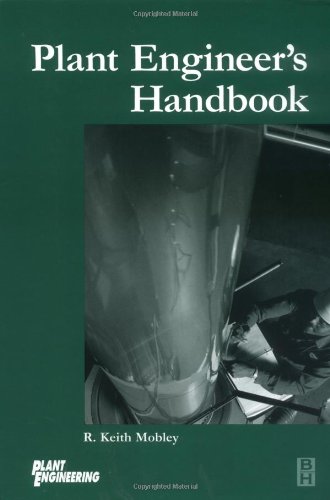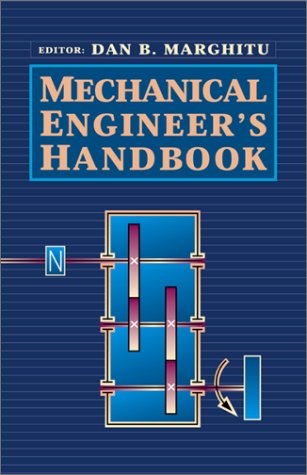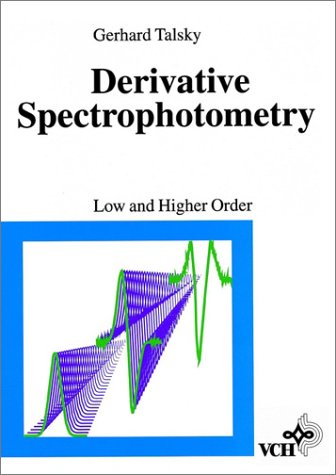R. Keith Mobley President and CEO of Integrated Systems Inc.9780750673280, 0-7506-7328-1
Table of contents :
Preface……Page 1
Foreword……Page 1122
Contents……Page 2
List of Contributors……Page 3
Definition and Organization of the Plant Engineering Function……Page 6
1.3 Responsibilities……Page 8
1.4 Organization……Page 9
Plant Engineering in Britain……Page 12
2.3 Aims of the Institution……Page 14
2.6 Registration with the Engineering Council……Page 15
2.9 Addresses for further information……Page 16
The Role of the Plant Engineer……Page 17
3.1 Responsibilities of the plant engineer……Page 19
Physical Considerations in Site Selection……Page 20
4.1 Environmental considerations of valley or hillside sites……Page 22
4.2 Road, rail, sea and air access to industrial sites……Page 23
4.3 Discharge of effluent and general site drainage……Page 25
4.4 Natural water supplies, water authority supplies and the appropriate negotiating methods and contracts……Page 27
4.5 Water storage, settling wells and draw- off regulations……Page 30
4.6 Problem areas associated with on- site sewage treatment for isolated areas……Page 32
4.7 Landscaping on industrial and reclaimed land……Page 33
Plant Location……Page 38
5.1 Selecting the location……Page 40
5.2 Services……Page 41
5.3 Ecology and pollution……Page 43
Notes……Page 45
Industrial Buildings……Page 46
6.2 Specifying an industrial building……Page 50
6.3 Security……Page 52
6.4 Leases……Page 54
6.5 Obtaining approval to build……Page 55
6.7 Fire detection and suppression……Page 56
6.8 Cost comparisons and contract procedure……Page 57
6.9 Structural and services supports……Page 58
6.10 Natural ventilation……Page 59
6.11 Building durability……Page 61
6.12 Building maintenance……Page 62
6.14 Domestic facilities……Page 63
6.15 Elevators……Page 64
6.17 Internal and external decoration……Page 66
6.18 Industrial ground floors……Page 67
6.19 Ground considerations……Page 68
Planning and Plant Layout……Page 70
7.3 Layout planning concepts……Page 72
7.4 Plant data……Page 73
7.5 Process/site layout modeling……Page 75
7.6 Design synthesis……Page 79
7.7 Site layout realization……Page 82
7.8 Internal layouts of buildings……Page 84
7.11 Consultants……Page 86
References……Page 87
Contracts and Specifications……Page 88
8.4 The specification and drawings……Page 90
8.6 Specific sums stated in bid documents……Page 91
8.8 Direct and bulk purchasing contracts……Page 92
8.9 Program of works……Page 93
8.11 Inviting bids……Page 94
8.13 Selection of the contractor……Page 95
8.15 Relationships between contractor and other parties……Page 96
8.17 Progress and control……Page 97
8.18 Quality control……Page 98
8.21 Safety on site……Page 99
8.23 Liquidated damages and loss and/ or expense……Page 100
8.25 Disputes and arbitration……Page 101
8.26 Common problems and solutions……Page 102
Industrial Flooring……Page 104
9.2 Thin applied hardener/sealers……Page 107
9.4 Self-leveling epoxy, polyester or reactive acrylic resin systems……Page 108
9.5 Heavy-duty flooring……Page 109
9.7 Conclusion……Page 111
References……Page 112
Insulation……Page 113
11.2 Principles of insulation……Page 115
11.3 Calculation of heat loss……Page 116
11.4 Standards of insulation……Page 119
11.5 Product selection……Page 121
11.6 Thermal conductivity……Page 122
11.7 Physical forms……Page 123
11.8 Facings……Page 124
11.9 Insulation types……Page 125
Paint Coatings for the Plant Engineer……Page 129
12.2 The constituents of paint……Page 131
12.3 Types of coating and their uses……Page 132
12.4 Surface preparation and priming……Page 138
12.7 Painting inspection……Page 140
12.8 Factors influencing the selection of coating systems……Page 141
Further reading……Page 142
Insurance: Plant and Equipment……Page 143
13.3 The role of the inspection authority……Page 145
13.4 Types of plant inspected……Page 147
13.5 Insurance covers on inspected plant……Page 148
13.6 Engineer surveyors……Page 149
13.7.1 Pressure plant……Page 152
13.9 Sources of information……Page 154
Appendix 1: Glossary……Page 155
Appendix 2: Statutory report forms……Page 156
Insurance: Buildings and Risks……Page 166
14.5 Fire protection……Page 168
14.9 Trade hazards……Page 169
14.11 Theft insurance policy terms and conditions……Page 170
14.14 Security objectives……Page 171
14.16 Site perimeter security……Page 172
14.20 Intruder alarms……Page 173
14.24 EmployerÌs liability……Page 174
14.27 The cover provided by liability insurance……Page 175
14.29 Employee safety and employerÌs liability……Page 176
14.30 Safety of the public and public liability ( third party)……Page 179
Electricity Generation……Page 180
15.2 Generation of electrical power……Page 182
15.3 Combined heat and power (CHP)……Page 189
15.4 Factors influencing choice……Page 191
15.5 The selection……Page 196
15.6 Plant and installation……Page 201
Electrical Distribution and Installation……Page 213
16.2 Bulk supply……Page 215
16.3 Distribution systems……Page 216
16.4 Switchgear……Page 217
16.5 Transformers……Page 219
16.6 Protection systems……Page 222
16.7 Power factor correction……Page 223
16.8 Motors and motor control……Page 228
16.9 Standby supplies……Page 229
16.10 Grounding……Page 231
16.11 Cables……Page 233
Electrical Instrumentation……Page 235
17.2 Electricity supply metering……Page 237
17.3 Power factor correction……Page 239
17.4 Voltage and current transformers……Page 240
17.5 Voltmeters and ammeters……Page 241
17.6 Frequency measurement……Page 243
17.7 Electronic instrumentation……Page 244
17.9 Cathode ray oscilloscopes……Page 245
17.10 Transducers……Page 247
17.13 Data recording……Page 250
Further reading……Page 251
Oil……Page 253
18.2 Storage tanks……Page 255
18.4 Pipework systems……Page 260
Gas……Page 265
19.1 Selection and use of gas as a fuel……Page 267
19.2 Theoretical and practical burning and heat transfer……Page 268
19.4 Energy conservation……Page 269
19.5 Clean Air Acts associated with gas burning……Page 272
19.6 Chimney requirements: codes of practice and environmental considerations……Page 273
19.7 Health and safety in the use of gas……Page 277
19.8 Pressure control……Page 278
19.9 Gas specification and analysis……Page 280
19.10 Control of efficiency……Page 281
19.11 Automation……Page 285
19.12 Fire and explosion hazards……Page 286
19.13 Maintenance……Page 287
19.15 Testing……Page 289
19.16 The gas grid system and distribution networks……Page 290
19.17 Emergency procedures……Page 292
19.18 Pipework……Page 293
19.19 Flow charts for use with gas……Page 295
19.20 Conversion factors……Page 298
Liquefied Petroleum Gas……Page 300
20.3 Requirements……Page 302
20.4 Typical properties of LPG……Page 303
20.5 Transport and storage……Page 305
20.7 Safety in storage……Page 309
20.8 Uses of gaseous fuels……Page 310
20.11 Codes of practice and guidance notes……Page 312
Institute of petroleum……Page 313
Steam Utilization……Page 314
22.2 What is steam?……Page 316
22.3 The steam load……Page 320
22.4 Draining steam lines……Page 321
22.5 Low-pressure systems……Page 325
22.6 Flash steam……Page 330
22.7 Condensate return systems……Page 334
Industrial Boilers……Page 348
23.1 Terminology……Page 350
23.2 Heat transfer in industrial boilers……Page 351
23.3 Types of boiler……Page 354
23.4 Application and selection……Page 358
23.5 Superheaters……Page 359
23.6 Economizers……Page 360
23.8 Efficiency……Page 361
23.10 Boiler house pipework……Page 362
23.12 Feedwater supply and tanks……Page 363
23.13 Blowdown requirements, control and tanks……Page 365
23.14 Clean Air Act requirement for chimneys and flue designs……Page 366
23.15 Steam storage……Page 367
23.16 Automatic controls on boilers……Page 368
23.18 The automatic boiler house……Page 369
23.19 Safe operation of automatic boiler plant……Page 370
23.21 Noise and the boiler house……Page 371
23.23 Management and operation……Page 373
Combustion Equipment……Page 375
24.2 Oil burners……Page 377
24.3 Gas burners……Page 379
24.4 Burner design considerations……Page 381
24.5 Future developments……Page 383
24.6 Coal burners……Page 384
24.7 Dual- and triple-fuel firing……Page 388
Economizers……Page 389
25.3 Gas-fired economizers……Page 391
25.4 Design……Page 392
25.6 Condensing economizers……Page 395
Heat Exchangers……Page 397
26.1 The APV Paraflow……Page 399
26.2 Comparing plate and tubular exchangers……Page 401
26.3 Duties other than turbulent liquid flow……Page 402
26.4 The problem of fouling……Page 404
Heating……Page 406
27.3 Building regulations……Page 408
27.5 Allowance for height of space……Page 410
27.9 Multiple-boiler installations……Page 411
27.10 Heating systems……Page 412
27.11 Heating equipment — attributes and applications……Page 417
Acknowledgement……Page 421
Ventilation……Page 423
28.2 Ventilation systems and controls……Page 425
28.3 Powered ventilation equipment……Page 428
28.4 Natural ventilation equipment……Page 431
28.5 System design……Page 433
28.6 After installation……Page 436
References……Page 438
Air Conditioning……Page 439
29.1 Basic principles and terms……Page 441
29.2 The air quantity required……Page 446
29.3 Heat losses and gains……Page 447
29.4 Air conditioning for computers……Page 448
29.5 Air distribution and system resistance……Page 450
29.6 Fans……Page 453
29.7 Dust control and filtration……Page 455
29.8 Humidification……Page 456
29.9 Test procedure for air-conditioning systems……Page 457
Energy Conservation……Page 461
30.1 The need for energy conservation……Page 463
30.3 The energy audit……Page 464
30.4 Energy management……Page 465
30.6 Energy targeting……Page 466
30.7 Major areas for energy conservation……Page 467
30.8 The justification for energy- conservation measures……Page 471
30.9 The mathematics of the presentation……Page 472
30.11 Motivation……Page 473
Reference……Page 474
Water and Effluents……Page 475
31.3 Water chemistry……Page 477
31.4 Building services……Page 479
31.5 Boilers……Page 481
31.6 Specified purities for process use……Page 482
31.7 Water-purification processes……Page 485
31.8 Membrane processes……Page 487
31.9 Effluents……Page 488
Pumps and Pumping……Page 491
32.2 Pump principles……Page 493
32.3 Effects of fluid properties on pump behavior……Page 499
32.4 Flow losses in systems……Page 501
32.5 Interaction of pump and system……Page 507
32.6 Cavitation……Page 508
32.7 Priming systems……Page 513
32.9 Pump and drive selection……Page 517
References……Page 521
Centrifugal Pump Installation……Page 523
33.2 Piping support……Page 525
33.5 Rules for proper installation……Page 526
33.6 Summary……Page 528
Cooling Towers……Page 529
34.3 Design techniques (see Appendix 34.1)……Page 531
34.5 Materials and structure design……Page 532
34.6 Specification……Page 533
34.7 Water quality and treatment……Page 534
34.10 Consultation……Page 535
34.11 Environmental considerations……Page 537
34.12 Problem areas……Page 540
34.13 Summary……Page 541
Appendix 34.1 Theoretical calculations……Page 542
Appendix 34.2 Evaluation of the MDF……Page 543
Appendix 34.3 Technical requirements……Page 544
Compressed Air Systems……Page 545
35.1 Assessment of a plant’s air consumption……Page 547
35.2 Compressor installation……Page 550
35.4 Selection of compressor plant……Page 554
Compressors……Page 558
36.1 Centrifugal compressors……Page 560
36.2 Positive displacement compressors……Page 563
36.3 Reciprocating compressors……Page 567
Mixers and Agitators……Page 572
38.1 Configuration……Page 574
38.4 Operating methods……Page 575
Gears and Gearboxes……Page 577
39.1 Configuration……Page 579
39.2 Performance……Page 584
39.4 Operating methods……Page 585
Hydraulic Fundamentals……Page 586
40.2 Basic hydraulics……Page 589
40.3 Forces in liquids……Page 591
40.4 Hydraulic pumps……Page 600
40.5 Hydraulic fluids……Page 601
40.6 Reservoirs, strainers, filters and accumulators……Page 610
40.7 Actuators……Page 613
4.8 Control valves……Page 617
4.9 Lines, fittings and seals……Page 620
Pneumatic Fundamentals……Page 634
41.2 Characteristics of compressed air……Page 636
41.3 Generation of pressure……Page 640
41.4 Compressors……Page 641
41.5 Air dryers……Page 643
41.6 Dried air systems……Page 645
41.7 Air reservoir (receivers)……Page 650
41.8 Safety valves……Page 651
41.9 Coolers……Page 652
Noise and Vibration……Page 654
42.2 Measurement of noise 42.3 Vibration……Page 659
42.4 Noise and vibration control……Page 660
42.5 Avoiding physical injury to workers……Page 661
42.7 Noise-control engineering……Page 662
42.8 Practical applications……Page 664
Vibration Fundamentals……Page 667
43.2 Vibration analysis applications……Page 669
43.3 Interpretation of vibration data……Page 673
43.5 Vibration sources……Page 674
43.6 Vibration theory……Page 676
43.7 Measurable parameters……Page 679
43.9 Common elements of curves……Page 680
43.10 Machine dynamics……Page 681
43.11 Degrees of freedom……Page 686
43.12 Vibration data types and formats……Page 688
43.13 Acquiring data……Page 696
43.14 Vibration analysis techniques……Page 697
Appendix 43.2 Glossary……Page 699
References……Page 701
Vibration Monitoring and Analysis……Page 702
44.2 Machine-train monitoring parameters……Page 706
44.3 Driven components……Page 711
44.4 Database development……Page 718
44.5 Vibration data acquisition……Page 725
44.6 Trending analysis……Page 732
44.7 Evaluation methods……Page 733
44.9 Failure mode analysis……Page 738
44.10 Failure modes by machine-train component……Page 748
References……Page 756
Air Pollution……Page 757
45.4 Legislation on air pollution of concern to the plant engineer……Page 759
Dust and Fume Control……Page 767
46.3 Control of dusts and fumes……Page 769
46.4 System design and application……Page 775
46.5 Testing and inspections……Page 779
Dust Collection Systems……Page 780
47.2 Baghouses……Page 782
47.3 Cyclone separators……Page 785
Maintenance Management in UK……Page 787
48.2 A ‘planned’ maintenance program……Page 789
48.3 A manual planned maintenance system……Page 790
48.4 Computer system……Page 794
48.6 Training……Page 796
Appendix: Elements of a planned maintenance system……Page 797
Predictive Maintenance……Page 799
50.2 Benefits of predictive maintenance……Page 801
50.3 Predictive maintenance techniques……Page 803
50.4 Selecting a predictive maintenance system……Page 809
50.5 Establishing a predictive maintenance program……Page 813
Planning and Scheduling Outages……Page 821
51.4 Outage planning……Page 825
51.5 Project shutdown planning……Page 828
51.6 Planning the cost dimension……Page 831
51.7 The outage plan……Page 833
51.8 Implementing the plan……Page 837
51.9 Updating the schedule……Page 838
51.10 Taking corrective action……Page 841
51.11 Completing the project……Page 844
51.12 A model for successful project management……Page 846
Lubrication……Page 847
52.3 Why a lubricant?……Page 849
52.4 Physical characteristics of oils and greases……Page 850
52.5 Additives……Page 851
52.6 Lubricating-oil applications……Page 852
52.8 Engine lubricants……Page 853
52.9 Gear lubricants……Page 858
52.10 Hydraulic fluids……Page 867
52.11 Machine tools……Page 870
52.12 Cutting fluids……Page 872
52.13 Compressors……Page 879
52.14 Turbines……Page 882
52.16 Greases……Page 883
52.17 Corrosion prevention……Page 885
52.20 Filtration……Page 886
52.22 Shaft seals……Page 888
52.24 Storage of lubricants……Page 889
52.27 Condition monitoring……Page 890
52.28 Health, safety and the environment……Page 891
Further reading……Page 892
Corrosion……Page 893
53.1 Corrosion basics……Page 895
53.2 The implications of corrosion……Page 901
53.3 Materials selection……Page 902
53.4 Design and corrosion……Page 908
53.5 Uses and limitations of constructional materials……Page 910
53.6 Specifying materials……Page 912
53.7 Corrosion-control techniques……Page 913
53.8 Corrosion monitoring……Page 915
Further reading……Page 916
Shaft Alignment……Page 918
54.2 Alignment fundamentals……Page 920
54.3 Coupling alignment versus shaft alignment……Page 921
54.4 Dial-indicator methods……Page 926
54.5 Alignment methods……Page 927
54.6 Alignment procedures……Page 929
54.7 Computations, adjustments, and plots……Page 935
54.8 Graphical plotting……Page 936
Rotor Balancing……Page 939
55.2 Sources of vibration due to mechanical imbalance……Page 941
55.3 Theory of imbalance……Page 942
55.6 Balancing……Page 943
55.7 Balancing standards……Page 945
References……Page 946
Packing and Seals……Page 947
56.2 Seal fundamentals……Page 949
56.3 Mechanical seal designs……Page 951
56.4 Installation procedures……Page 952
References……Page 958
Gears and Gear Drives……Page 959
57.2 Types of gears and their characteristics……Page 961
57.3 Gear teeth……Page 967
57.4 Measurements and dimensions……Page 968
References……Page 972
Flexible Intermediate Drives……Page 973
58.2 Belt drives……Page 975
58.3 Installation……Page 978
58.4 Problem areas……Page 981
58.5 Summary……Page 983
58.6 Chain drives and sprockets……Page 988
References……Page 993
Couplings and Clutches……Page 994
59.2 Fundamentals of couplings……Page 996
59.3 Keys, keyways and keyseats……Page 1003
59.4 Fundamentals of clutches……Page 1006
References……Page 1008
Bearings……Page 1010
60.2 Commonly used bearing types……Page 1013
60.3 Rolling element or anti-friction bearings……Page 1016
60.4 Lubrication……Page 1022
60.5 Installation and general handling precautions……Page 1023
60.7 Improper bearing selection and/or installation……Page 1026
60.8 Operating conditions……Page 1028
References……Page 1029
Finance for the Plant Engineer……Page 1030
61.2 Types of organization……Page 1032
61.3 Definitions……Page 1033
61.4 Budgetary control……Page 1035
61.5 Capital expenditure Û appraisal methods……Page 1036
61.7 Standards and standard costing……Page 1038
61.8 Capital……Page 1042
61.10 Break-even charts……Page 1043
61.11 Supply of steam, power, water, etc. to other departments……Page 1044
61.12 Charges for effluent and environmental services……Page 1045
Statistical Approaches in Machinery Problem Solving……Page 1046
62.3 Useful life concepts……Page 1048
62.4 Bad actor management……Page 1050
62.5 Estimates of distribution percentiles and probabilities of failure……Page 1055
62.6 Concluding remarks……Page 1059
Health and Safety in the UK……Page 1060
63.3 Administration of the Health and Safety at Work Act……Page 1062
63.4 General duties……Page 1063
63.5 Safety policy……Page 1064
63.9 HSE area offices……Page 1065
63.10 Health and safety procedures……Page 1066
63.14 Safe working areas……Page 1067
63.17 Confined spaces……Page 1068
63.19 Plant and equipment……Page 1069
63.21 Asbestos……Page 1070
63.25 Assessment of potential hazards……Page 1071
63.26 Alternative method of assessing hazards……Page 1072
63.27 Permits to work……Page 1073
63.30 ContractorÌs conditions and safe working practices……Page 1074
63.31 Safe working practices and procedures……Page 1075
63.33 ContractorÌs guide……Page 1077
Regulatory Compliance Issues in the US……Page 1079
64.2 Recommended spill response……Page 1081
64.4 Incident investigation requirements……Page 1082
64.5 OSHA’s investigation process……Page 1084
Appendix 64.1 List of abbreviations……Page 1086
Index……Page 1091







Reviews
There are no reviews yet.